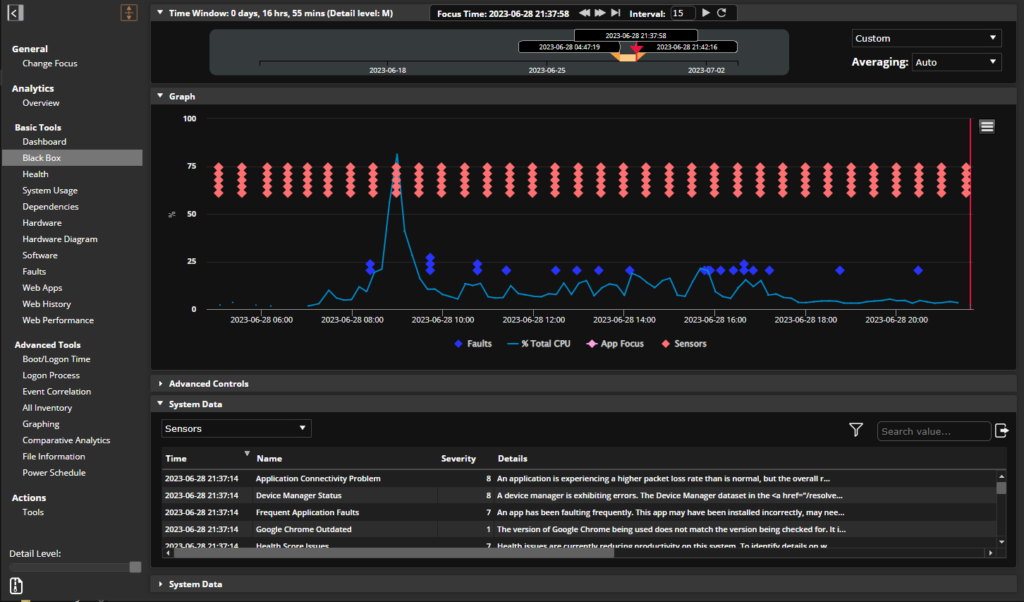A Healthcare VDI Story: Geisinger’s Journey to Better End-User Experience

Geisinger is one of the largest health service organizations in the US and sets an example in healthcare VDI environments. With about 30,000 employees, Geisinger’s computing environment not only has to scale across its hospitals and research facilities, but it also needs to guarantee a certain standard of performance so that its staff can maintain a high quality of care.
An organization consisting of 30,000 endpoints and moving to thin clients and VDI, Geisinger wanted to ensure they were leveraging end-user experience as a tool in patient care. They identified that treating the computing experience as an integral part of patient care included making sure desktops were performing optimally, that applications and other resources were right-sized, that the environment was being monitored and that the user’s (or clinician’s) experience was personalized to what they needed to provide excellent care.
A Healthcare VDI Story: Making Computing Experience a Key Tool in Patient Care
Geisinger started using SysTrack to kickstart three major areas in order to guarantee a high standard of performance: rationalizing applications, right-sizing VDI, hardware and other resources, and defining user roles. After using SysTrack, Geisinger was able to identify:
– How many hours users were being impacted by poor end-user experience
– Which applications and application packages were not being used
– How to improve power management
– What is the impact of improvements performed in the environment, down to dollar values
-… and more!
At VMworld 2018, Geisinger’s Enterprise Architect, Dan Thomas, shared their story on how they used workspace analytics to optimize their environment. Watch our own, Heather Bicknell, interview Dan in this 3-minute video or read it below.
You may also be interested in…
- How Are Global Banks Monitoring EUC Environments? Standard Chartered’s Story
- What’s new with SysTrack?
- Satellite vs Probe: Choosing Your Ideal Digital Experience Monitoring Tool
Transcript
Heather: Hi, I’m here at VMworld with Dan Thomas, Enterprise Architect at Geisinger. Dan just finished up a great presentation at the Lakeside booth. We’ll have it recorded up as well. But Dan, for anyone who missed it, could you tell us a little bit about what you do?
Dan: Sure. What we’re doing at Geisinger is, we’re really focusing on end-user computing as an application delivery model. Very identity driven. So, it really comes down to what type of users are using applications, and how they’re consuming it. So, in the past, we really had a workstation-centric approach. And we really didn’t know who was using the apps on some of the shared computers, which are very prevalent in healthcare. So, what we’ve started to do is track our applications and the performance of those applications right on the workstations and find out who’s using them and why. That helps us with rationalization, and it also helps us with performance.
Heather: And you talked a lot about end-user experience as well. Could you tell us what a great end-user experience means to Geisinger?
Dan: Yeah, so we actually approach it almost like a guarantee. We want to be delivering new IT services and guarantee that performance. It’s really important to us, especially in healthcare where seconds save lives. And also, our clinicians have expectations of patient care tools to be right sized, perform great, and we really want to give that guarantee back to our clinicians.
Heather: I know you’re on a few panels here at VMworld. I’m assuming those will be up and recorded for anyone who missed those. But could you tell us a little bit–I know you’re excited about the “Innovations in Healthcare” –can you give us a little preview of what you’ll be talking about?
Dan: Yeah, so we have a pretty big roaming desktop, non-persistent VDI environment. And what that means for our clinicians is we’re using badge tap to deliver a personal experience to those places that were shared workstations. So, we’re trying to deliver them the exact apps that they need, wherever they need them. And also give them some of their personalized things, like their internet favorites, and pick up where they left off–if it’s just in a workstation, or if they’re actually providing that patient care. Like in-patient units, outside rooms, OR’s, that type of thing.
Heather: All right. And obviously now we’re here at the Lakeside booth. Could you tell us a little bit about why you chose SysTrack, how you arrived at that decision?
Dan: Yeah, so we decided to do end-user experience monitoring when we started moving our EMR directly on our VDI image. And we really wanted to guarantee the performance of it. It used to be on a hosted platform, and now that we’re moving it right into a Windows 10 desktop, we want to make sure that even if they’re just checking their email or they’re working in our EMR, that that experience is going to be good. And sometimes from an IT perspective, the next and greatest things are always kind of blamed. You roll out a new network protocol, or you roll out a new application, and then that’s blamed for slowness or–
Heather: Yeah.
Dan: “I can’t open my email.” And now we have a view right down to–I kind of equate it to looking at like Google Earth, and we’re getting right down to the person mowing their backyard, right?
Heather: Yeah, exactly.
Dan: So, we really want to see that unique experience and guarantee that for them.
Heather: Well that’s awesome. Well thanks so much Dan for talking to us.
Dan: Yes, thank you.
Do you run a healthcare VDI or thin client environment? Talk with one of our representatives to learn about how you can right-size your apps and VDI environment, improve clinicians’ end-user experience, and prove your projects are making a tangible difference like Geisinger did using SysTrack!
Subscribe to the Lakeside Newsletter
Receive platform tips, release updates, news and more



